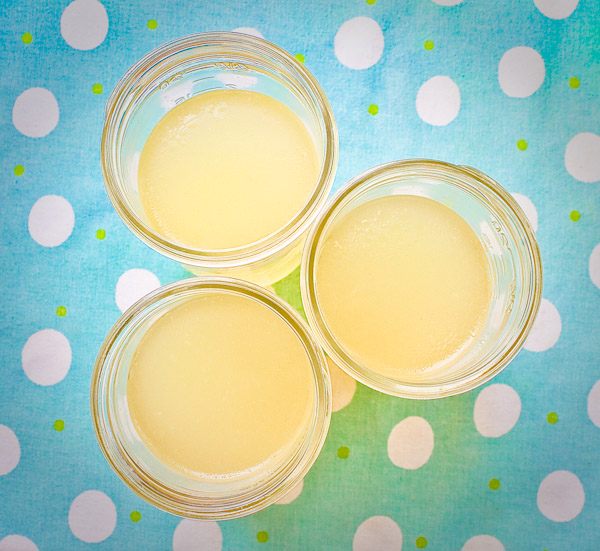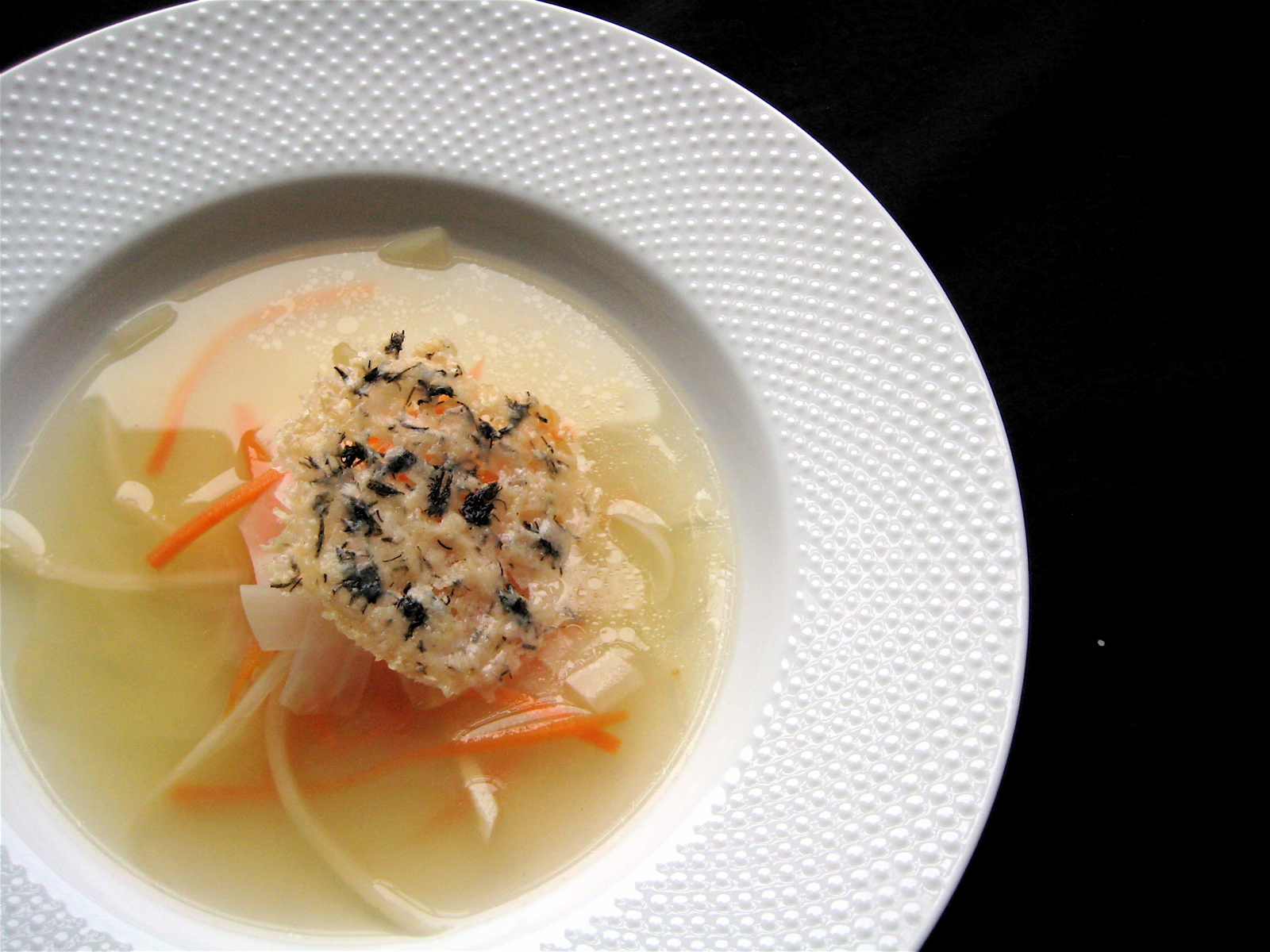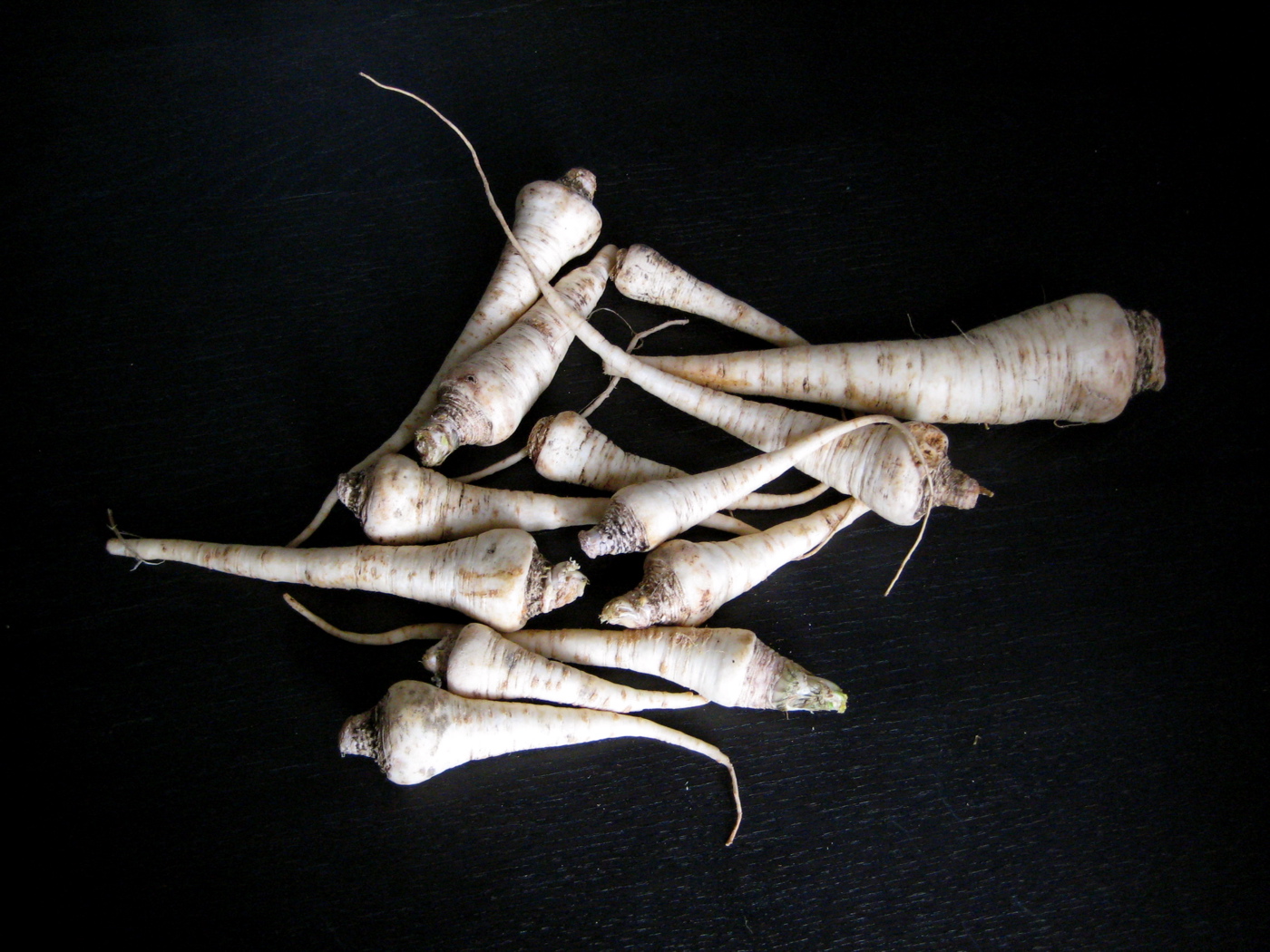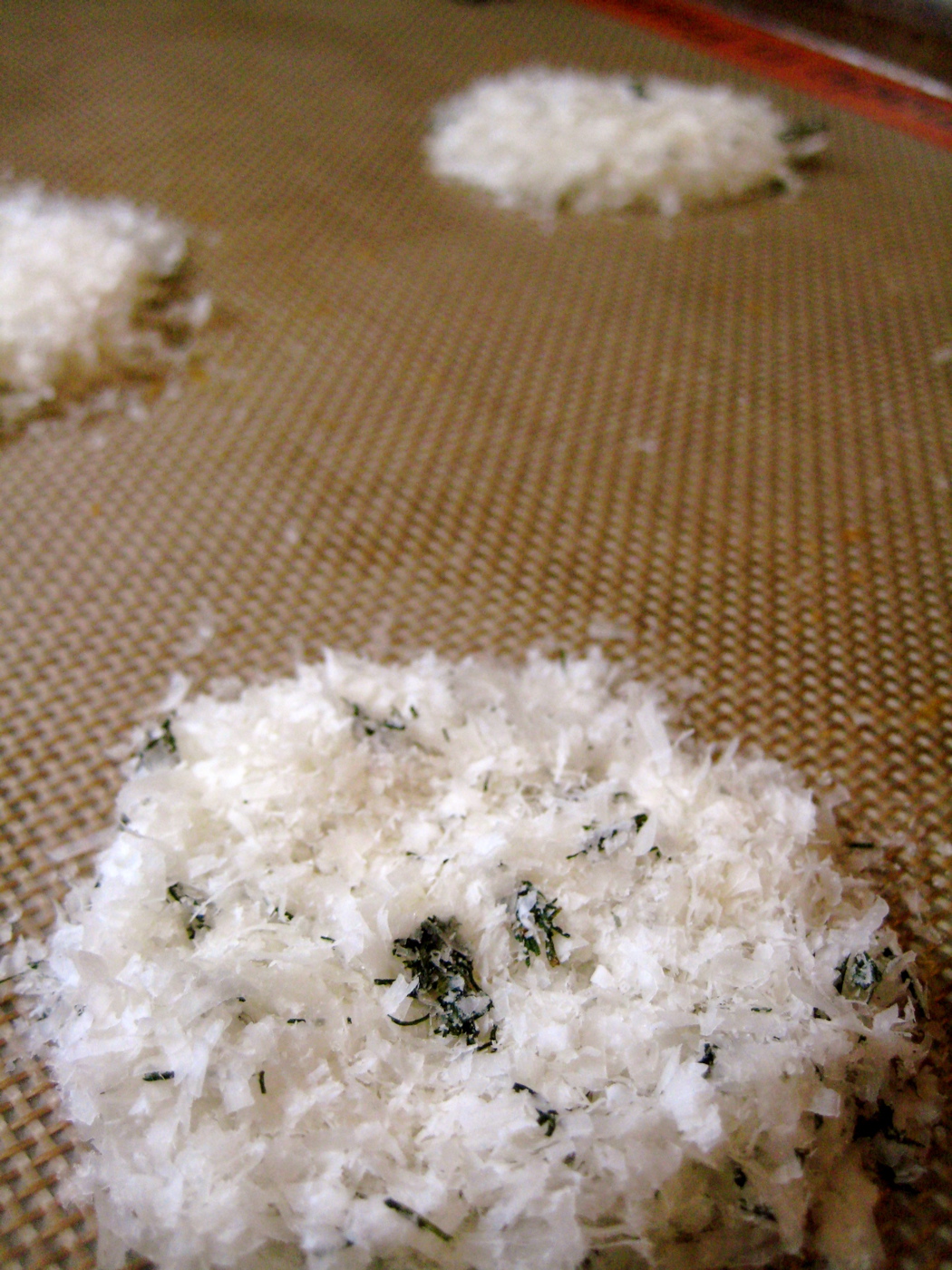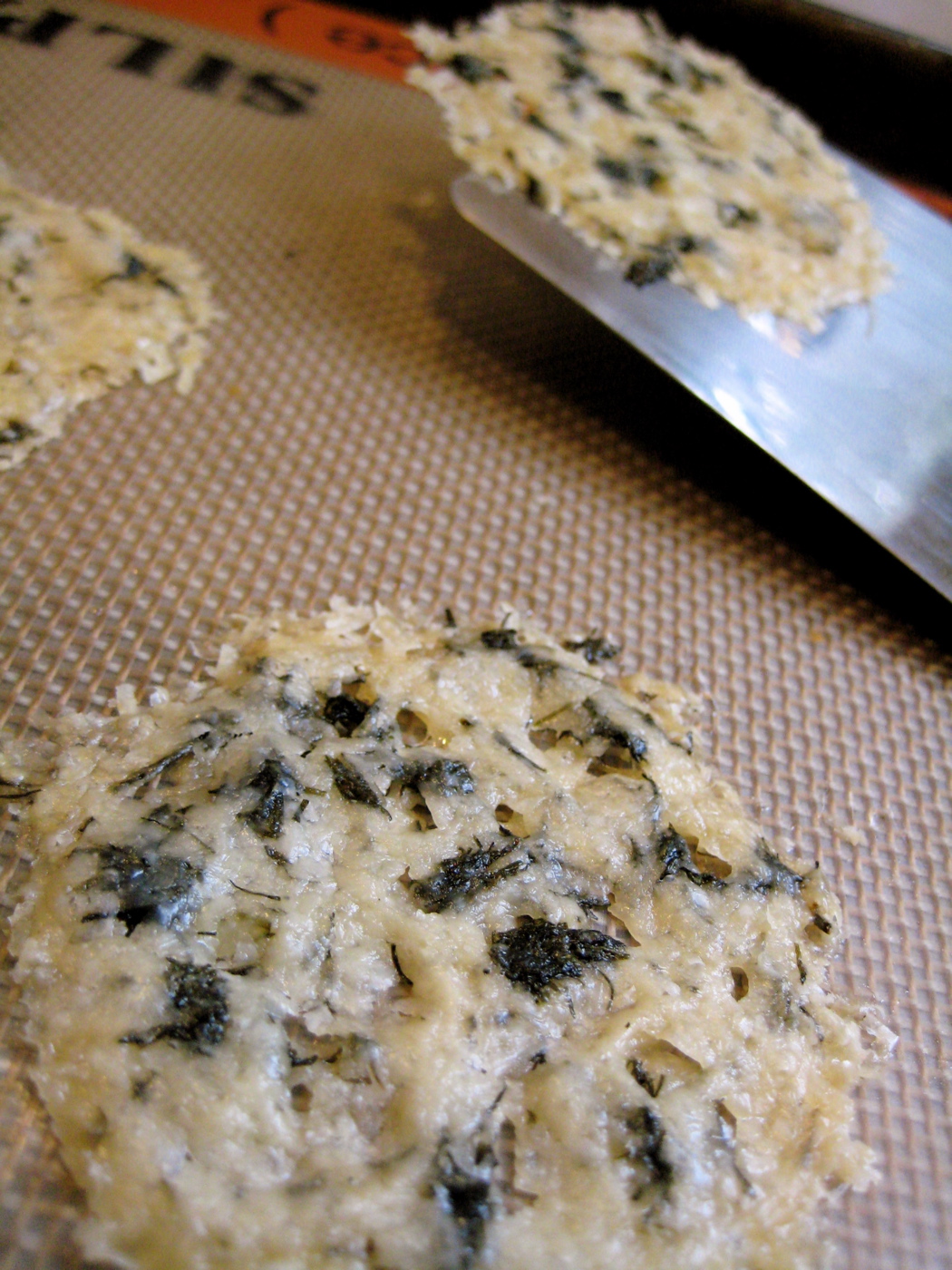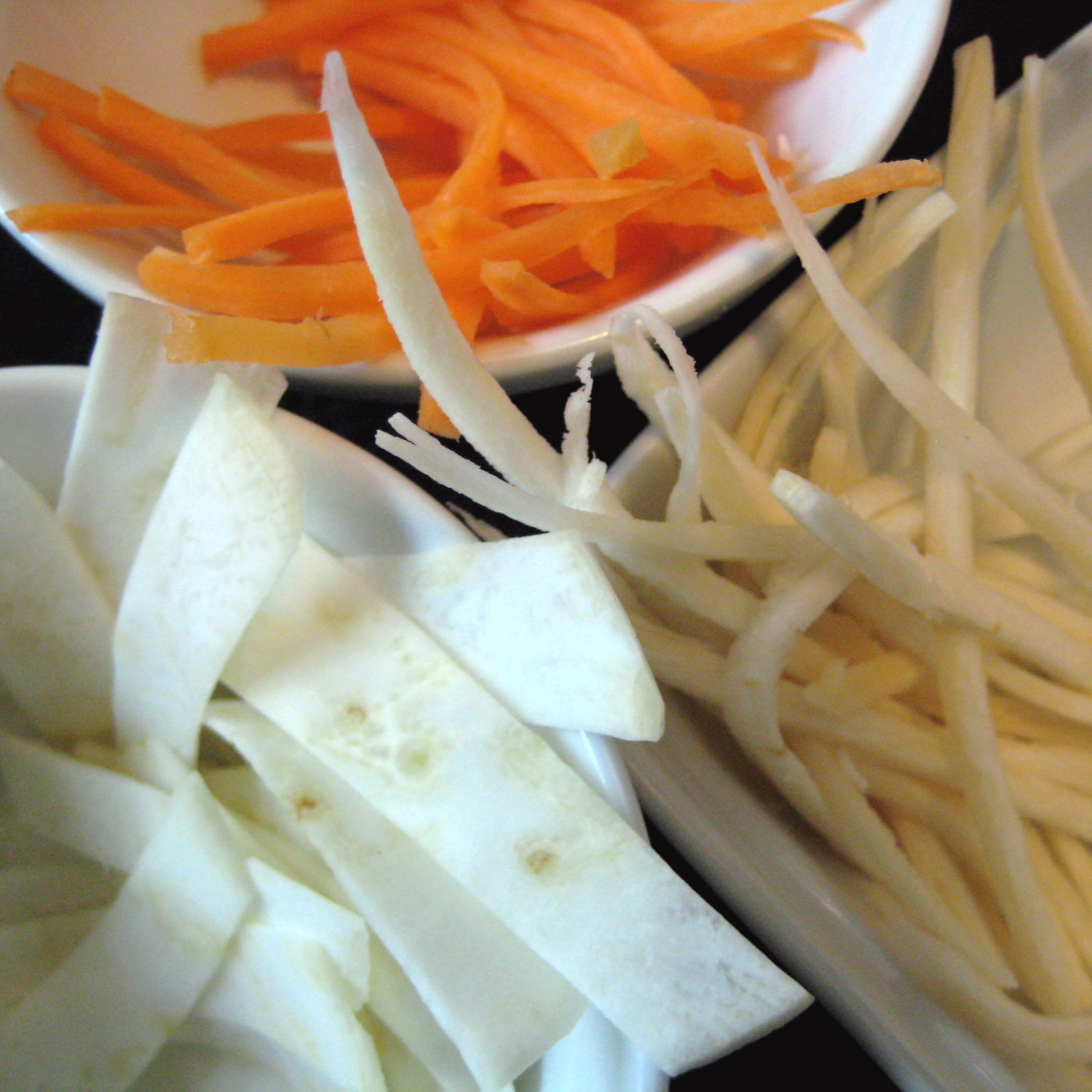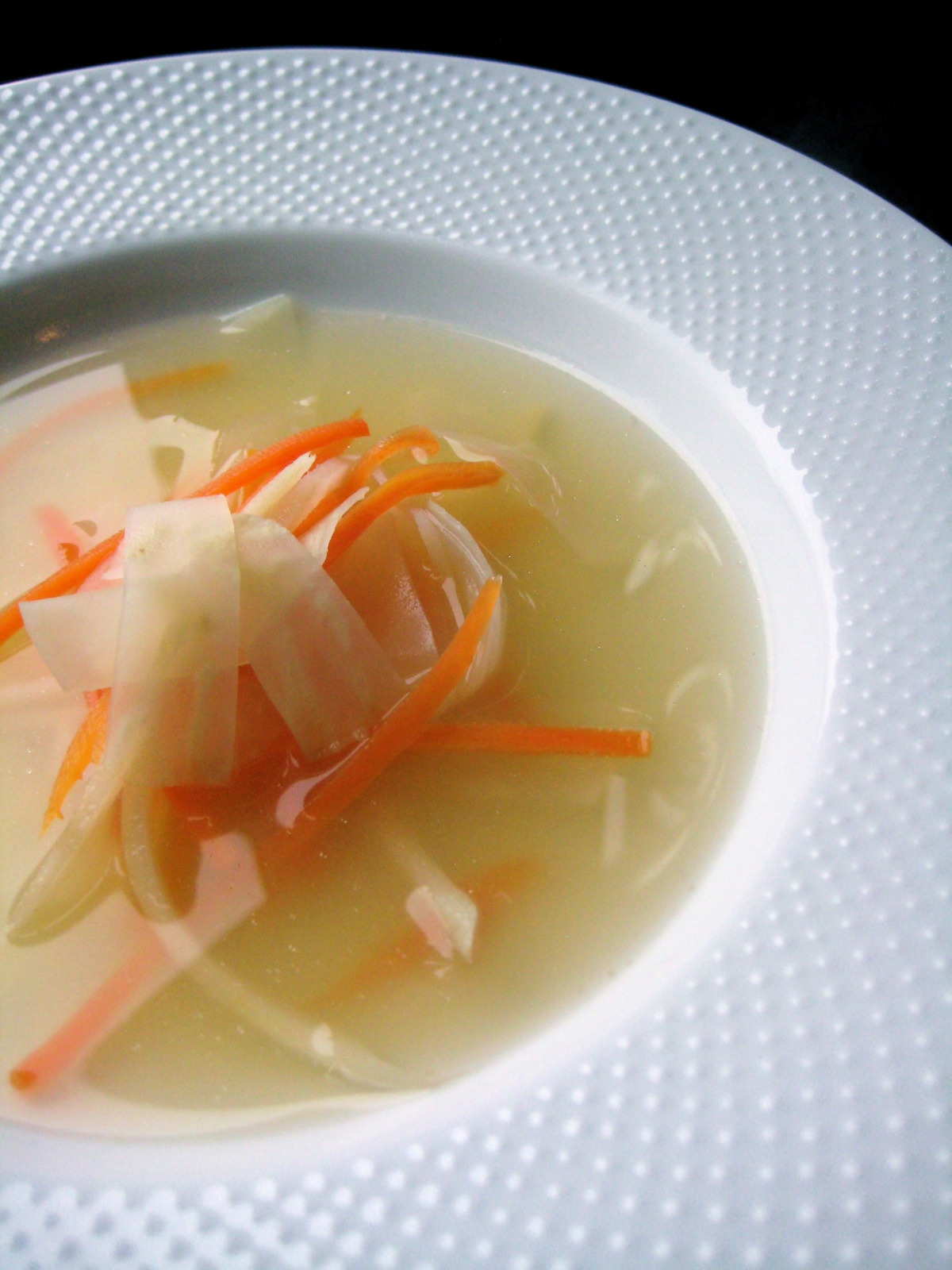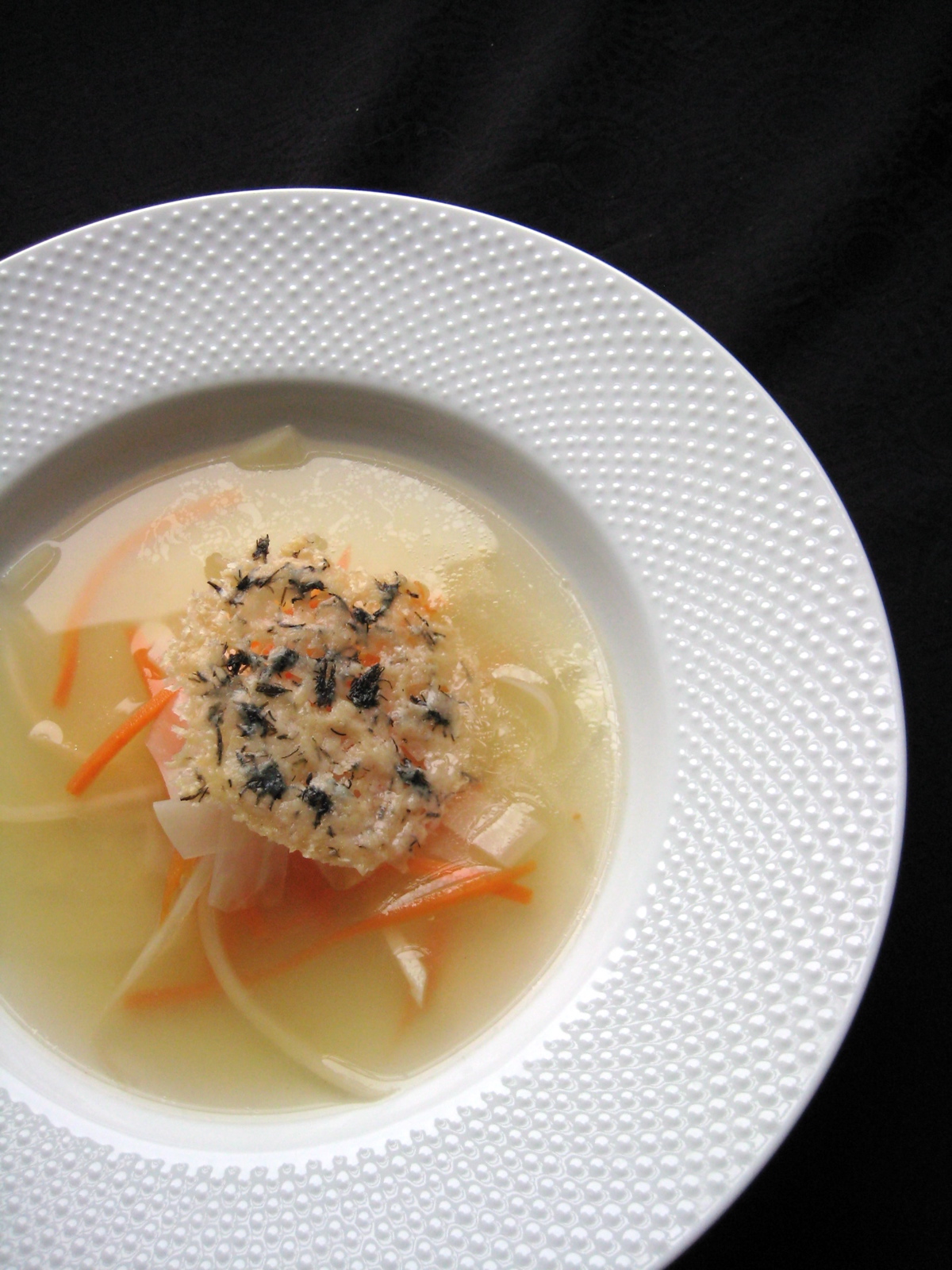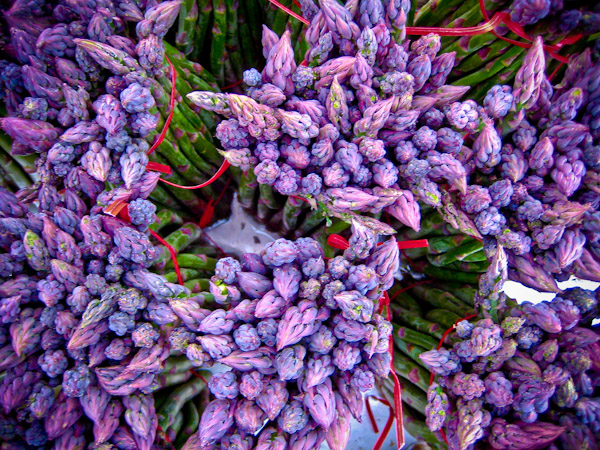 Here's another recipe to break up your asparagus monotony (that is, unless you are coincidentally eating sesame asparagus nightly). When cooked at its freshest, grilled asparagus spears are practically candy. Tender, sweet, nutty, with a slight tang from the rice vinegar, this recipe is a natural in asian-inspired meals. Try it alongside grilled chicken or salmon (using the same dressing as a marinade for those too), or tossed with noodles. I imagine the stalks would be stunning draped across a big platter of this peanut noodle dish from ramshackleglam.com. They can definitely be grilled a day ahead and served cold or at room temperature, for an excellent effortless entertaining side dish. Just save the final dressing and sesame seed tossing for right before serving.
| ||||||||||||||||||||||
Of all of the amazing things I learned in culinary school, by far the most valuable was how to make great stock. I clearly remember the lightbulb moment when it was demonstrated to us. I clearly remember rushing home that weekend with a bag of carrots, celery, and onions, dying to practice it on my own, and proudly showing my husband my new skill. At this point it is totally ingrained in our weekly life. We whip up a pot of stock almost without thinking, whenever we have extra bones or the reserve in the freezer is getting low. Daily we use lovely homemade stock in all areas of cooking, sometimes where you would just add water, adding a huge boost of flavor and protein. It is such a joy to have it always on hand, know exactly what is in it, and have such a superior ingredient. I can't even smell store-bought broth in a can anymore. There. Is. No. Comparison. I also really value that we are using every bit of the animal, right down to its bones, neck and feet. There is incredible flavor and protein in there. But also if that animal is going to die for me to eat it, and I am certainly not going to take that for granted and be wasteful. Do yourself a giant favor and have a few quarts of this on deck in your freezer. Use it to cook rice and grains, reduce it for sauces, throw in shredded vegetables and thin noodles for a quick soup, and hundreds of other applications. I also love sipping a mugful for a mid-afternoon snack.
| ||||||||||||||||||||||
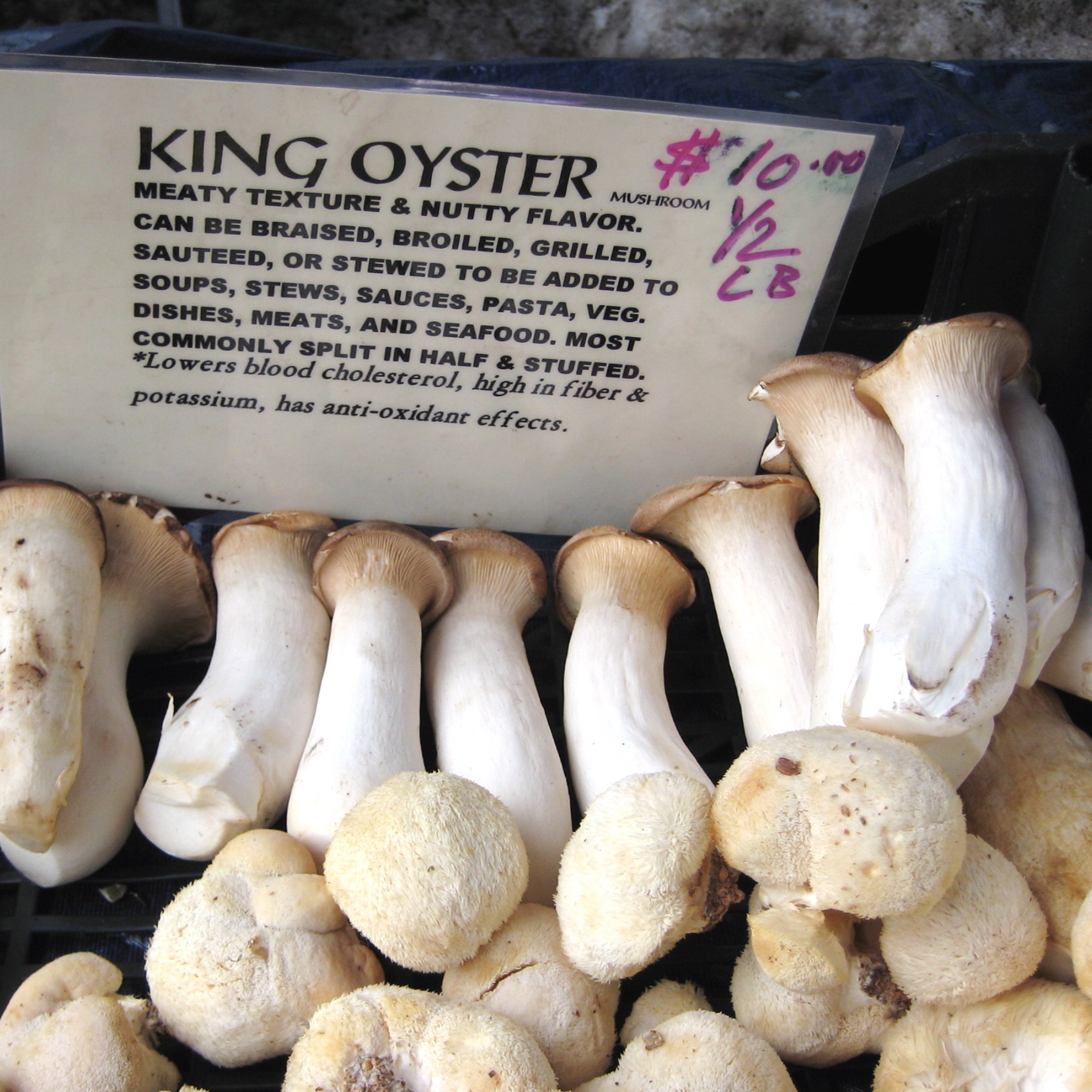 So the very first meal of the blog, and of this year’s project: to cook from the farmers market, or my garden, and post recipes every week. So the very first meal of the blog, and of this year’s project: to cook from the farmers market, or my garden, and post recipes every week.As mentioned previously, this week’s trip to the Union Square farmers market included finding some gorgeous king oyster mushrooms and kale. The first time I saw king oyster mushrooms in the market about a year ago I was so intrigued by their size and shape. These were about 7 inches long and nearly two inches in diameter. I tend to be drawn to the geometrics and architecture of food, was excited by the prospect of being able to be able to have substantial pieces of mushroom in new shapes—large slabs, long matchsticks. Not to mention the lovely, delicate, buttery flavor and texture of these beauties. Though not local, we are currently right in the middle of blood orange season. (What Are Blood Oranges) The ones I’ve been eating this week are intensely purple inside with a deep berry flavor. They are always startling to cut into, and offer great color and sweetness in both of these recipes. It is also worth mentioning that we get just the best chickens and eggs every week, all year, from the local farm Quails-R-Us Plus located in Honesdale, PA (Google Maps: Quails-R-US Plus). Everything we’ve had from them has been spectacular, and their chickens are particularly amazing. Super succulent and flavor you couldn’t begin to expect from a store bought bird. Grab a chicken from a farmer at the green market and this recipe will sing. 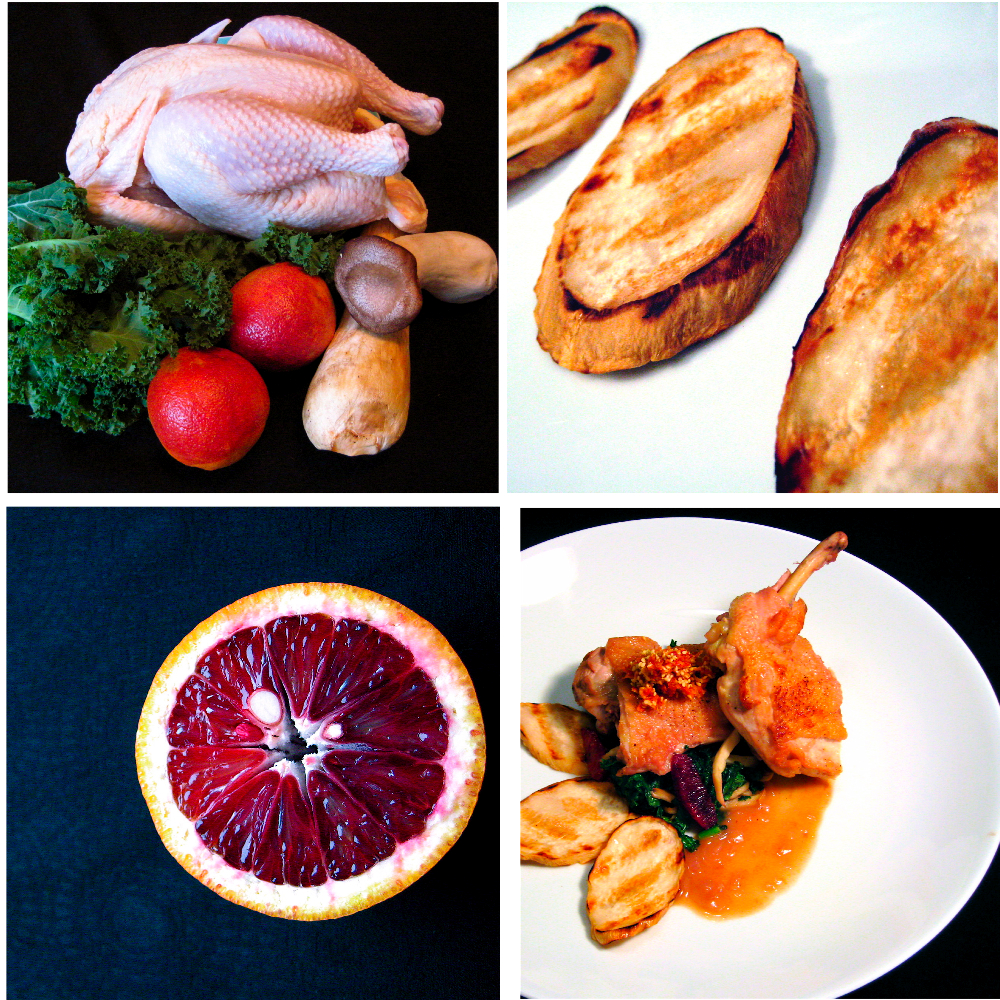 Blood Orange Braised Chicken, with Sesame Kale & King Oyster Mushrooms By Catie Serves 4 For the Chicken: 1 3-4 lb chicken, quartered 1 ½ TBS vegetable oil 2 shallots, thinly sliced 1 TBS blood orange zest (from about 2 oranges) 1 TBS toasted sesame seeds 1 cup blood orange juice (from about 4 oranges) 1 tsp sherry vinegar 1 ½ cup chicken stock salt & pepper Heat oil in a dutch oven, or heavy bottomed pot. Season the chicken pieces on each side. When oil is shimmering, put chicken, skin-side first, in pot in a single layer. Brown on both sides. Remove to a plate. Pour off all but 1 tsp of fat. Sauté the chopped shallot, until translucent and fragrant. Deglaze the pot with blood orange juice, and then sherry vinegar. Add chicken stock and bring to a simmer. Return chicken pieces to pot (liquid should be halfway up the sides of the pieces—add more stock or juice if needed). Cover and simmer gently until chicken pieces are cooked through, about 35 mins, depending on size of the chicken. Remove chicken from pot, and cover to keep warm. Reduce the sauce remaining in the pot slightly over medium heat. Mix sesame seeds and blood orange zest together gently in a bowl and set aside. For the Kale & Mushrooms: 1 TBS vegetable oil 4 cups, packed, thinly chopped kale 2 large King Oyster Mushrooms, about a pound (feel free to substitute) Segments from 2 blood oranges 1 ½ tsp sesame oil 1 TBS toasted sesame seeds salt Sliced the lower, thicker, part of the king oyster mushroom on the bias into large oval slices. Cut the top, narrower, portion into smaller pieces or matchsticks. While chicken is cooking, heat half of the oil in a large saute pan or brush grill or grill pan. Sauté or grill the large disks of the oyster mushrooms. Remove from heat, season, and set aside. Add the remaining oil to the pan. Sauté smaller, or matchstick pieces of mushrooms. When halfway cooked, add Kale and continue to sauté. Right at the end, throw in segments of blood orange and any juice that has accumulated from them. Just before serving, toss with toasted sesame seeds, dress with sesame oil and season to taste with salt. Serve a few slices of grilled mushroom on each plate, with a heap of sautéed vegetables, topped with a piece of chicken and surrounded by sauce. Lightly sprinkle with zest and sesame mixture. | ||||||||||||||||
|
|
{ welcome! }
 Catie Baumer Schwalb is a chef, food writer and photographer, who splits her life between the city and the country. Not too long ago Catie was a New York City based actress and playwright for more than a decade. She has her Master of Fine Arts from the National Theater Conservatory, and her Grand Diplôme in classic culinary arts from the French Culinary Institute in New York City.
... Read More ≫
Catie Baumer Schwalb is a chef, food writer and photographer, who splits her life between the city and the country. Not too long ago Catie was a New York City based actress and playwright for more than a decade. She has her Master of Fine Arts from the National Theater Conservatory, and her Grand Diplôme in classic culinary arts from the French Culinary Institute in New York City.
... Read More ≫{ get in touch }
{ what's new }
September 12, 2015
August 19, 2013
August 15, 2013
August 13, 2013
August 1, 2013
{ favorites }
{ archives }
Appetizers / Breads & Pastry / Breakfast / Cakes / Canning / Condiments / Dinner / DIY foods / Drinks / Fall / favorites / Grains / Holidays / Local / Noodles & Pasta / Pies & Tarts / Poultry / Salads / Seafood / Snacks / Soup / Spring / Summer / Sweets / Techniques / Vegetables / Vegetarian / Winter /
{ currently reading }
|



